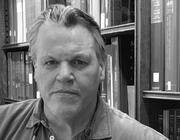Citation:

Abstract:
Advances in 19th century concepts of electromagnetism moved rapidly from experimental novelties to prominent and practical applications. At the start of the century gas and oil lamps burned in homes, but by the end of the century electric light bulbs illuminated an increasing number of electrified homes. By mid-century (1865) a telegraph cable connected the United States and England. Yet, within a few decades, even this magnificent technological achievement was eclipsed by advancements in electromagnetic theory that spurred the discovery and development of the radio waves that sparked a 20th century communications revolution. So rapid were the advances in electromagnetism that by the end of the 19th century high-energy electromagnetic radiation in the form of x-rays was used to diagnose injury. The mathematical unification of 19th century experimental work in electromagnetism profoundly shaped the relativity and quantum theories of 20th century physics.
In the late 18th and 19th centuries philosophical and religious ideas led many scientists to accept the argument that seemingly separate forces of nature (e.g., electricity, magnetism, light, etc.) shared a common and fundamental source. In addition, profound philosophical and scientific questions posed by Issac Newton's Optics (published in 1704) regarding the nature of light still dominated the 19th century intellectual landscape. Accordingly, in addition to a search for a common source of all natural phenomena, an elusive "ether" through which light could pass was thought necessary to explain the wave-like behavior of light.
The discovery of the relationship between electricity and magnetism at the end of the 18th century and the beginning of the 19th century was hampered by a rift in the descriptions and models of nature used by mathematicians and experimentalists. To a significant extent, advances in electromagnetic theory during the 19th century mirrored unification of these approaches. The culmination of this merger coming with Scottish physicist James Clerk Maxwell's (1831-1879) development of a set of equations that accurately described electromagnetic phenomena better than any previous non-mathematical model.
The development of Maxwell's equations embodied the mathematical genius of the German mathematician Carl Fredrich Gauss (1777-1855), the reasonings and laboratory work of French scientist Andre Marie Ampere (1775-1836), the observations of Danish scientist Hans Christian Oersted (1777-1851), and a wealth of experimental evidence provided by English physicist and chemist Micheal Faraday (1791-1867). (more)
